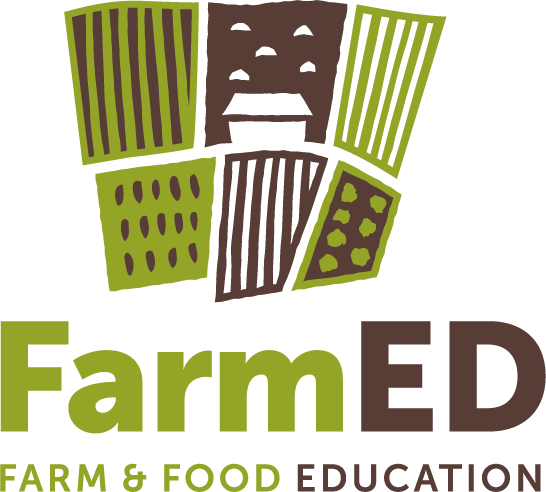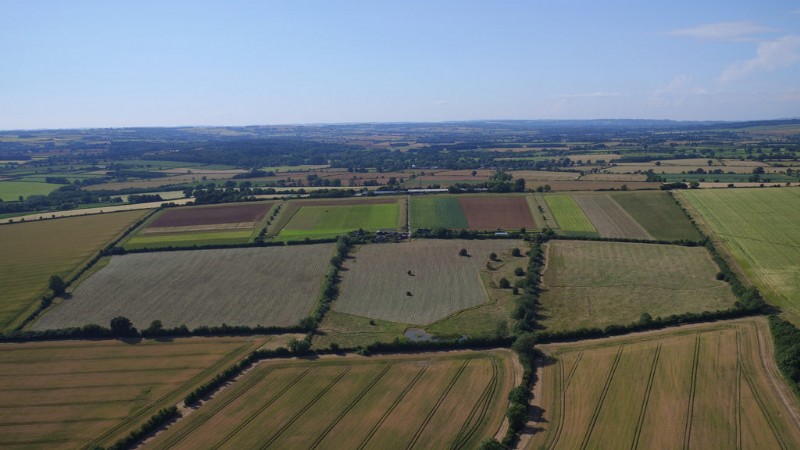
‘Natural’ Flood Management at Honeydale Farm.
An innovative partnership project between Cotswold Seeds and the Cotswold Rivers Trust has recently been completed at our Honeydale Farm site. The scheme re-routed the running spring at Honeydale to help reduce the likelihood of flooding along the Evenlode Valley and also create a new wetland habitat area for wildlife in the grass field at Honeydale. Simply put, the principle is to capture the flow upstream to prevent flooding further It is likely that the existing spring at Honeydale was diverted from its original field course at least 50 years ago, to a channel which ran downhill in a straight line along the central hedgerow. This was used as a way to ‘dry’ out the grassland and make it more productive for grazing animals and hay production. Although only a relatively small water flow the spring runs constantly all year, directly into the River Evenlode. This catchment is known to flood regularly, with a particularly bad flood in 2007 which caused over 50 homes to be damaged in the nearby downstream village of Ascott under Wychwood.
We sought the expert advice of Vaughan Lewis who runs the Company Windrush AEC Ltd, which has a long history of advising and implementing these type of projects. One of the aims is to provide a small scale demonstration of how a watercourse can be improved to reduce runoff and erosion. By holding up the flow of the water and allowing it to be released in a controlled way. The peak flow of water reaching the river is lowered during heavy rainfall, reducing the likelihood of flooding.The scheme created several small leaky dams known as attenuation bunds, connected by short lengths of meandering channel. Water is held back by the bund until the level reaches a perforated stone dam. Once this has been breached the water runs onto the next dam, repeating the process. In this way the amount of spring water entering the river, is reduced. Once water over-tops the final dam it is collected in a shallow scrape where excess will drain away into the subsoil. As well as attenuating runoff, the scheme will reduce the loss of fertilisers and nutrients from farmland into the River Evenlode.

The second part of this project is to plant the final water holding area with about half a hectare of trees, to form an infiltration zone. As the tree roots develop over time they create preferential pathways for water soakage to help excess water infiltrate into the subsoil. In addition trees themselves use up water to help them grow.Increased flood peaks, low summer flows and increased pesticide and fertiliser burdens have all been identified as damaging impacts on the river, which fails to meet Good Ecological Status under the Water Framework Directive. The project addresses all of these issues, albeit on a small scale. In addition it significantly improves local biodiversity, creating an important wetland habitat for local wildlife. Snipe have already been seen on the newly created scrape area. There is also a significant element of carbon capture associated with the planted trees, which will provide a sustainable and valuable source of firewood in time. Our aim is that the project will be used as an example for visitors such as landowners, land managers and other stakeholders to see techniques in which erosion, runoff and flooding can be managed in a catchment that has a history of flooding, overland erosion and damage to land and property. The expectation is that the principles of the project will be adopted by other landowners in the Evenlode valley and elsewhere in the country.
The project received financial support from Big Lottery Fund’s ‘Awards for All’, whose support is gratefully acknowledged.
Tree Planting
We finished our tree-planting in the first week of February. Tree planters, brothers, Neil and Colin Taylor, planted an area of 2.3 ha with around 6,000 shrubs and trees, including 450 metres of hedging.
The hedging runs along the line of the seeded/arable interface and is predominantly thorn (60%), with the rest comprising guelder rose, wayfaring tree, spindle, dogwood and a small amount of wild crab.
A 5m ride has been left between the hedge and edge of the main planting on the eastern and western side, with sinuous lines of planting creating scallops of ground adjacent to the ride which have been left as additional unplanted habitat. There’s also a 5m gap between the roadside deer fence and the edge of the trees.
The backbone of the central sections is made up of an average of 2500 trees per ha. made up of 800 field maple trees, 75 limes, 150 Beech, with birch planted to give some early nursing effect near the Beech areas. At either side of the backbone there are a mixture of 550 hazel, 175 blackthorn and 175 thorn. The outermost rows are planted in clumps of species, using groups of between 3 and 7 of the generally smaller stature plants - 375 Guelder Rose, 375 Wayfaring tree, 150 Spindle, 110 crab apples, 40 wild pears, 225 thorns, 75 dogwoods, plus 110 Bird Cherry and 75 Wild Cherry which are bigger and make a good edge in the field side mixtures. There are 75 Robinia plants in the field side mixture too.
Now let it rain!!
Birdboxes

As modern agricultural practices take much of the blame for the 50% decline in farmland birds, we are putting into place our plans to ensure we provide a little piece of bird heaven at Honeydale Farm!
In addition to all of the planting we have done, which in time should provide fabulous nesting sites and food supplies for the birds, the new habitats that will be created by our flood alleviation work, the supplementary feeding, plus the insect attracting seed mixtures due to be sown in the spring, we have just finished installing cosy bird boxes around the farm.
We have chosen the very long lasting Schwegler Woodcrete nest boxes. They come with a 25 year guarantee and are very solid indeed. We bought several different types to appeal to a wide variety of birds from sparrow terraces, swallow bowls, tit boxes to wren balls, an amazing array of luxury bird homes! We have put most of them around the farm buildings so that we can enjoy watching any inhabitants as they come and go. We inherited 7 feral farm cats when we bought the farm so with some expert advice from Louise Spicer of the Wychwood Project's Bird Aid programme, we had to try and ensure all the nest sites are safe from their attention.
Schwegler advice is that no minimum distance is required between birds. Two species can breed next to each other on the same tree. Depending on the site, (the more natural the better) and the amount of pests, up to 15 nest boxes per acre can be installed in woods, gardens etc.

We are determined to give the birds every chance to start their breeding season well fed and in good health and by providing just a bit of extra housing for some of them we hope to give plenty of them the opportunity to rear a succession of large broods of chicks. If, as we hope, we eventually end up with twice the number of birds on the farm, back to the pre war numbers once seen, can you imagine what double the volume of birdsong will sound like ?!
- Celene Wilkinson







